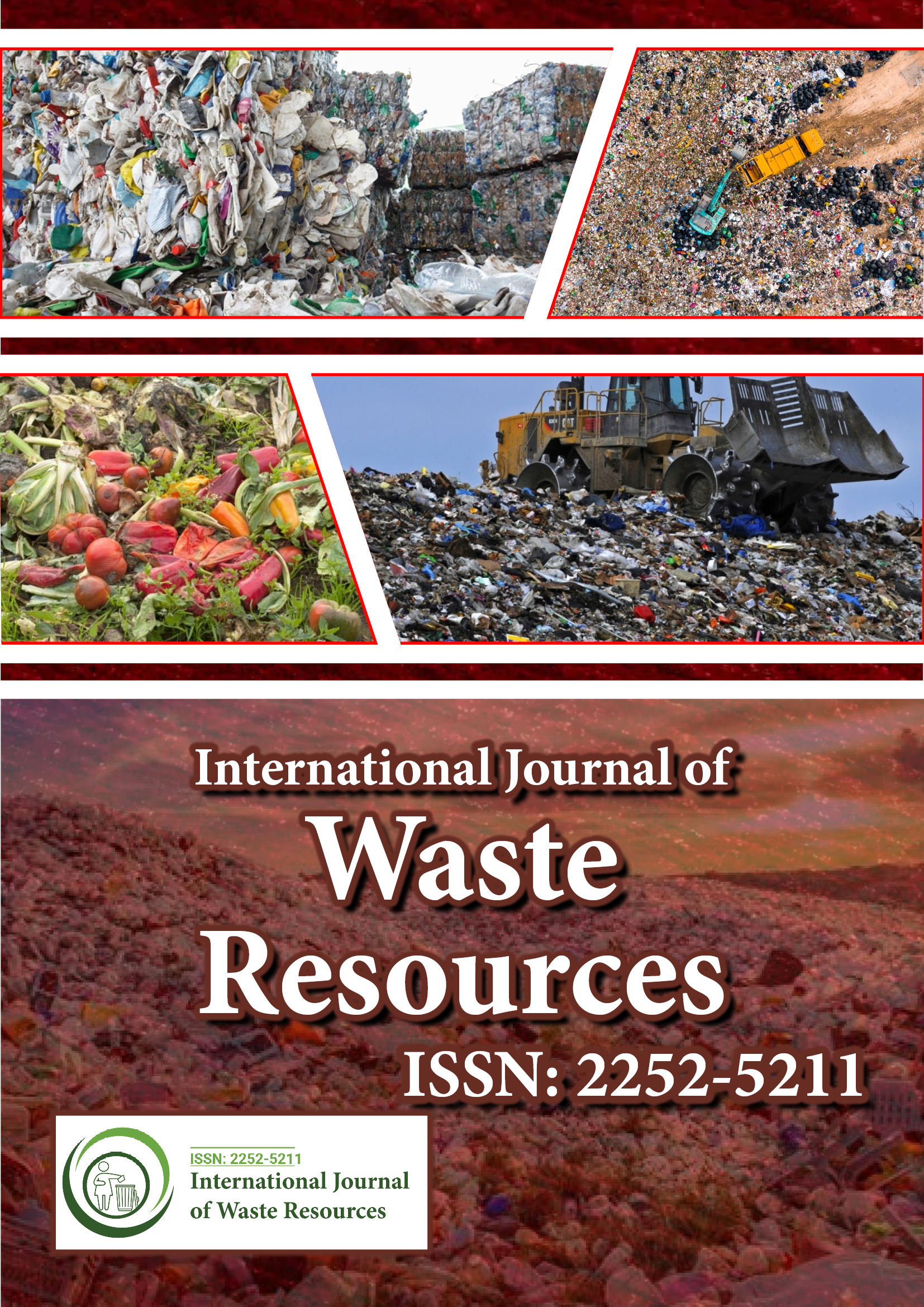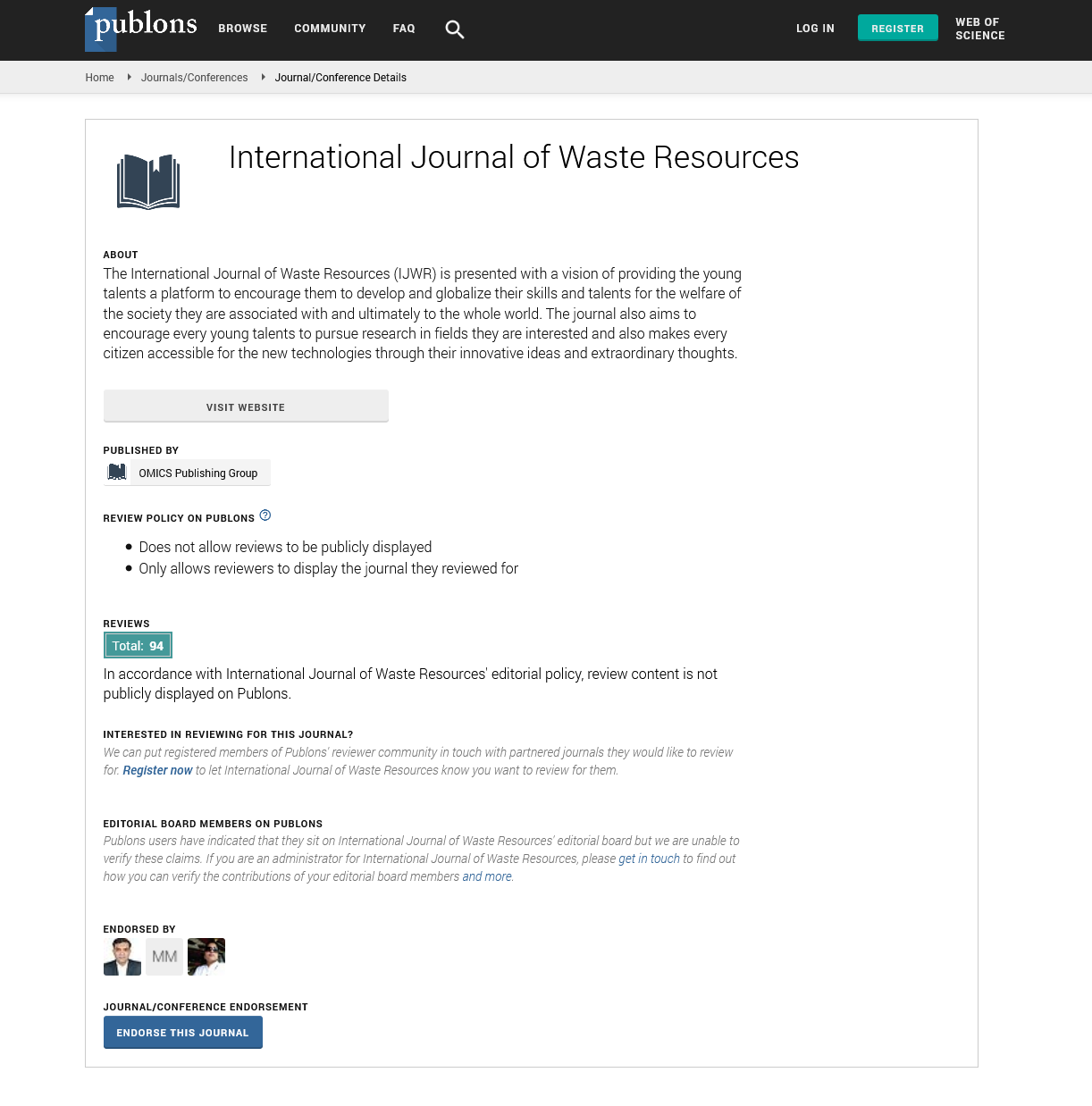Indexed In
- Open J Gate
- The Global Impact Factor (GIF)
- Open Archive Initiative
- VieSearch
- International Society of Universal Research in Sciences
- China National Knowledge Infrastructure (CNKI)
- CiteFactor
- Scimago
- Ulrich's Periodicals Directory
- Electronic Journals Library
- RefSeek
- Directory of Research Journal Indexing (DRJI)
- Hamdard University
- EBSCO A-Z
- Publons
- Google Scholar
Useful Links
Share This Page
Journal Flyer

Open Access Journals
- Agri and Aquaculture
- Biochemistry
- Bioinformatics & Systems Biology
- Business & Management
- Chemistry
- Clinical Sciences
- Engineering
- Food & Nutrition
- General Science
- Genetics & Molecular Biology
- Immunology & Microbiology
- Medical Sciences
- Neuroscience & Psychology
- Nursing & Health Care
- Pharmaceutical Sciences
Opinion Article - (2025) Volume 15, Issue 2
Agricultural Waste: Generation, Management, Environmental Impact, Recycling, Challenges, and Sustainable Solutions
Maria Koukou*Received: 30-Apr-2025, Manuscript No. IJWR-25-29432; Editor assigned: 02-May-2025, Pre QC No. IJWR-25-29432; Reviewed: 16-May-2025, QC No. IJWR-25-29432; Revised: 23-May-2025, Manuscript No. IJWR-25-29432; Published: 30-May-2025, DOI: 10.35248/2252-5211.25.15.615
Description
Agricultural waste refers to the residues and by-products generated through various farming activities including crop cultivation, livestock rearing and agro-industrial processing. This waste can be categorized into two main types: organic and inorganic. Organic agricultural waste includes crop residues such as straw, husks, stems, leaves, animal manure and food processing by-products. Inorganic waste involves non-biodegradable materials such as pesticide containers, plastic mulch films, irrigation pipes and packaging materials. With the intensification of agriculture to meet the food demands of a growing population, the volume of agricultural waste has significantly increased, posing challenges for environmental sustainability and resource efficiency.
The generation of agricultural waste is a natural consequence of the farming process. During harvesting, a substantial portion of the plant such as stalks, leaves and roots is left behind as residue. In many developing countries, this biomass is often burned in open fields, leading to air pollution and greenhouse gas emissions. Similarly, in animal husbandry, large volumes of manure and slurry are produced. If not managed properly, these can leach into water bodies, contaminating groundwater and contributing to the spread of diseases. Additionally, agro-industrial operations such as fruit and vegetable processing generate peels, seeds, pulp and wastewater, which require careful disposal or reuse strategies.
The improper management of agricultural waste can have severe environmental consequences. Open burning of crop residues releases harmful pollutants such as particulate matter, carbon monoxide and volatile organic compounds, contributing to smog and respiratory health issues. Runoff from animal waste can lead to eutrophication of rivers and lakes, causing algal blooms that deplete oxygen and harm aquatic life. The indiscriminate disposal of pesticide containers and plastics can contaminate soil and water, disrupt ecosystems and pose risks to human and animal health.
To mitigate these environmental risks, sustainable agricultural waste management practices are essential. One of the most effective approaches is composting, which involves the controlled aerobic decomposition of organic matter into nutrient-rich compost. This compost can be used to improve soil structure, fertility and moisture retention, reducing the need for chemical fertilizers. Manure composting, in particular, helps to stabilize nutrients, reduce pathogens and minimize odors. When properly managed, composting transforms agricultural waste from an environmental burden into a valuable agricultural input.
Another method of managing agricultural waste is anaerobic digestion, a biological process that breaks down organic matter in the absence of oxygen to produce biogas and digestate. The biogas, primarily composed of methane, can be used for cooking, heating, electricity generation, or even upgraded to biomethane for vehicle fuel. The digestate, rich in nutrients, can be applied as a fertilizer. Anaerobic digestion is especially effective for managing livestock waste and agro-industrial effluents, helping to reduce greenhouse gas emissions and generate renewable energy.
Agricultural residues can also be utilized for energy production through thermochemical processes like combustion, gasification and pyrolysis. Crop residues such as rice husks, corn stalks and sugarcane bagasse can be burned in biomass power plants to generate electricity and heat. Pyrolysis converts biomass into bio-oil, char and syngas, which can be used as fuels or chemical feedstocks. These technologies not only reduce waste volumes but also contribute to the diversification of the rural energy supply and reduce dependence on fossil fuels.
In addition to energy and compost, agricultural waste can be used to produce a wide range of bio-based products. For example, plant fibers from crop residues can be used to manufacture biodegradable packaging, paper, textiles and building materials. Animal by-products such as feathers and bones can be processed into animal feed, fertilizers, or even bioplastics. These innovations support the development of a circular bio-economy, where waste is minimized and resources are continuously reused and recycled.
Despite the potential benefits, several challenges hinder effective agricultural waste management. These include lack of awareness among farmers, inadequate infrastructure for collection and processing, limited access to appropriate technologies and weak regulatory enforcement. In many regions, smallholder farmers lack the financial and technical capacity to adopt advanced waste management practices. Additionally, there may be limited markets for compost, biogas, or other waste-derived products, making investments less attractive.
Addressing these challenges requires coordinated efforts from governments, agricultural institutions, private sector players and local communities. Policies should promote sustainable waste management through incentives, training programs and support for research and innovation. Infrastructure investments in rural areas such as biogas plants, composting facilities and collection systems are essential. Capacity-building initiatives can empower farmers with the knowledge and skills needed to manage waste responsibly and explore opportunities for value addition. Public awareness campaigns are also critical in changing attitudes towards agricultural waste. Demonstrating the economic and environmental benefits of proper waste management can encourage wider adoption of sustainable practices. Integrating agricultural waste management into broader environmental and rural development strategies can further enhance outcomes and align with global sustainability goals.
Conclusion
In conclusion, agricultural waste is an inevitable by-product of food and fiber production, but it need not be a problem. With the right strategies and technologies, it can become a valuable resource for energy, fertilizer and materials. Sustainable agricultural waste management not only protects the environment and public health but also enhances farm productivity and rural livelihoods. As the world seeks to build more resilient and sustainable food systems, turning agricultural waste into opportunity is both a necessity and a promising solution.
Citation: Koukou M (2025) Agricultural Waste: Generation, Management, Environmental Impact, Recycling, Challenges and Sustainable Solutions. Int J Waste Resour: 15:615.
Copyright: © 2025 Koukou M. This is an open-access article distributed under the terms of the Creative Commons Attribution License, which permits unrestricted use, distribution and reproduction in any medium, provided the original author and source are credited

